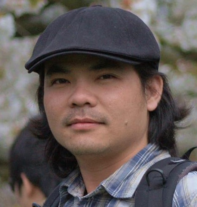Atomic layer deposition of TiN films: Growth and electrical behavior down to sub-nanometer scale
Promotion date: January 16.
Promotor: Prof.dr. Rob Wolters
Assistant promotor: Dr. Alexey Kovalgin
| During the last several decades, titanium nitride (TiN) has gained much interest because of its low resistivity, chemical inertness and compatibility with complementary metal-oxide-semiconductor (CMOS) technology. Thin films of TiN are commonly used as diffusion barriers and gate material for CMOS devices. Mostly sputtering and chemical vapor deposition (CVD) techniques were employed to deposit the TiN films. However, to achieve thin conformal films with accurate thickness control and excellent step coverage, atomic layer deposition (ALD) has become an ideal choice for making such high quality films in the thickness range of a few tens of nanometers. In this research, the growth mechanism and electrical properties of ALD TiN films are investigated. The films are grown on SiO2 substrate, monitored by in situ spectroscopic ellipsometry (SE). The films are characterized by other complementary analysis techniques, including atomic force microscopy (AFM), high-resolution scanning/transmission electron microscopy (HR-SEM/TEM), X-ray fluorescence (XRF) and X-ray photoluminescence spectroscopy (XPS). We fabricated test structures to characterize electrical properties of the thin films. The resistivity, temperature coefficient of resistance (TCR) and field effect in thin TiN films down to sub-nanometer scale are presented. The results show that the resistivity increases significantly with decreasing film thickness. With decreasing film thickness, the TCR values change sign from positive to negative. This change occurs at a thickness of about 2.5 nm. This effect is attributed to the metal-semimetal transition in these films. The electric field effect in ultra-thin TiN films in the metallic and the semimetallic states is presented. Upon electrical field, a change of the conduction current up to 22% is found for the films in the semimetallic state. |
Was your thesis work application oriented?
Yes, it was. We aimed to examine the films for several potential applications in microelectronic devices such as nano-crystalline non-volatile memories, physical unclonable functions and field effect devices. However, it turned out that our films are not suitable for the first two applications but we obtained very good results which are promising for applications in field effect devices.
A user-committee was involved in my thesis project, including representatives from STW contributing companies, like NXP and ASM International. Also other companies (Alcatel, Intrinsic-ID) and several academic institutes from Ireland and the Netherlands were involved. The yearly committee meetings were very inspiring to me.
Did you manage to have some articles published?
I have had four publications. These appeared in the Journal of the Electrochemical Society (JES), the Journal of Nanoscience and Nanotechnology, Applied Surface Science, and the ECS Journal of Solid State Science & Technology. I have submitted another article. At the moment I am working on two more manuscripts.
Was there a moment that you recall especially?
When actually measuring the huge field effect on the ultrathin TiN layers, below one nanometer, I was very surprised and happy. The field effect appeared to be huge. We didn’t expect that at all. This happened at the end of my third year.
In what way did you develop personally, from a scientist and researcher point of view?
My knowledge level extended tremendously when compared to my position as a teaching assistant in Vietnam, four years ago. The field of layer deposition was totally new to me at the time. I couldn’t imagine by then I was able to design such experiments in a cleanroom environment. I like performing experiments this way a lot.
What are your future plans?
I have got an offer for a postdoc position in a FOM project that will be carried out here at MESA+. Therefore, I will continue doing research here for two more years. I will try to learn as much as possible about doing research and about technology. The most important thing is how to stand on my own legs. After that, I will go back to my mother country, Vietnam, to develop my research career. I hope that in the near future, together with my colleagues - who are now working and studying all over the world: here in Twente, Amsterdam, Germany, and outside of Europe - we will be able to build a lab, or even a research institute.
Here at MESA+ I liked the open atmosphere of research very much so. It is quite different from the way we are working in Vietnam. I hope to transfer some of this culture also when trying to start something new in Vietnam.

